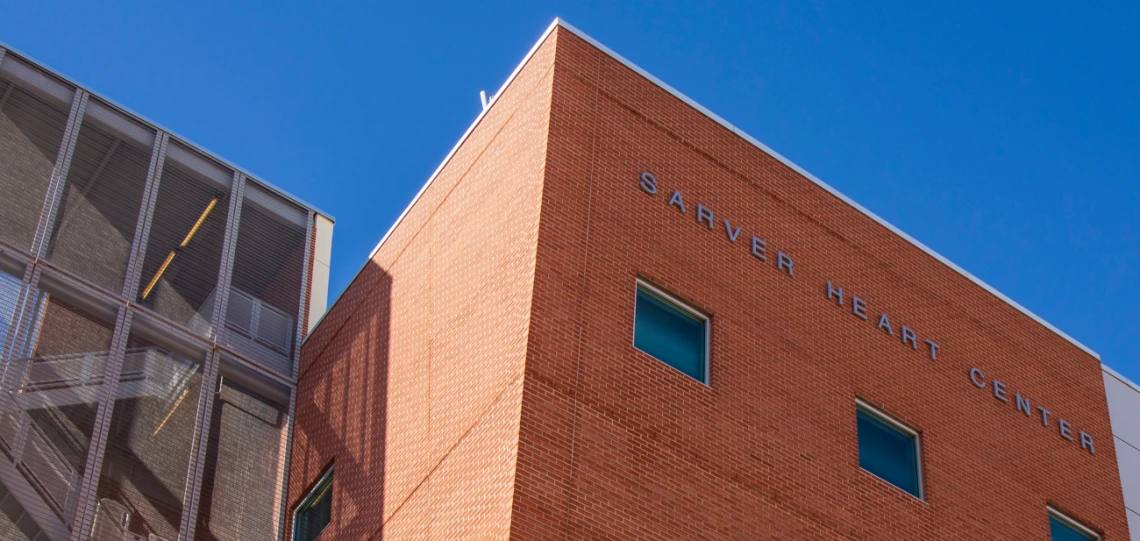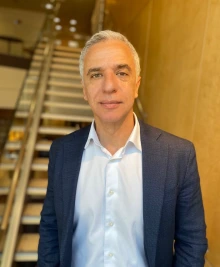Can the heart heal itself? New study says it can.
An international research team co-led by Sarver Heart Center Director Hesham Sadek, MD, PhD, shows that about 25% of patients with artificial hearts can regenerate heart muscle after a heart attack.

Anna C. Christensen
A research team co-led by a physician-scientist at the University of Arizona College of Medicine – Tucson’s Sarver Heart Center found that a subset of artificial heart patients can regenerate heart muscle, which may open the door to new ways to treat and perhaps someday cure heart failure. The results were published in the journal Circulation.
According to the Centers for Disease Control and Prevention, heart failure affects nearly 7 million U.S. adults and is responsible for 14% of deaths per year. There is no cure for heart failure, though medications can slow its progression. The only treatment for advanced heart failure, other than a transplant, is pump replacement through an artificial heart, called a left ventricular assist device, which can help the heart pump blood.

Angela Martinez
“Skeletal muscle has a significant ability to regenerate after injury. If you’re playing soccer and you tear a muscle, you need to rest it, and it heals,” said Hesham Sadek, MD, PhD, director of the Sarver Heart Center and chief of the Division of Cardiology in the U of A College of Medicine – Tucson’s Department of Medicine. “When a heart muscle is injured, it doesn’t grow back. We have nothing to reverse heart muscle loss.”
Dr. Sadek gave an example of a type of severe heart attack commonly called a “widow maker,” caused by blockage of one of the heart’s biggest arteries.
“If you survive it, you can lose up to 40% of your heart muscle cells in one event,” he said. “When you lose so much heart muscle, the remaining muscle is under a lot more stress, and the heart gets progressively weaker over time.”
Through a grant awarded to Dr. Sadek by the Leducq Foundation Transatlantic Networks of Excellence Program, which brings together American and European investigators to tackle big problems, Dr. Sadek led a collaboration between international experts to investigate whether heart muscles can regenerate.
The project began with tissue from artificial heart patients provided by colleagues at the University of Utah Health and School of Medicine, led by Stavros Drakos, MD, PhD, a pioneer in left ventricular assist device-mediated recovery.
Jonas Frisén, MD, PhD, and Olaf Bergmann, MD, PhD, of the Karolinska Institute in Stockholm, led teams in Sweden and Germany to track whether these samples contained newly generated cells using their own innovative method of carbon dating human heart tissue.
The investigators found that patients with artificial hearts regenerated muscle cells at more than six times the rate as healthy hearts.
“This is the strongest evidence we have, so far, that human heart muscle cells can actually regenerate — which really is exciting, because it solidifies the notion that there is an intrinsic capacity of the human heart to regenerate,” Dr. Sadek said. “It also strongly supports the hypothesis that the inability of the heart muscle to ‘rest’ is a major driver of the heart’s lost ability to regenerate shortly after birth. It may be possible to target the molecular pathways involved in cell division to enhance the heart’s ability to regenerate.”
Finding better ways to treat heart failure is a top priority for Dr. Sadek and the Sarver Heart Center. This study builds on Dr. Sadek’s prior research into rest and heart muscle regeneration.
In 2011, Dr. Sadek published a paper in Science showing that while heart muscle cells actively divide in utero, they stop dividing shortly after birth to devote their energy to pumping blood through the body nonstop, with no time for breaks.
In 2014, he published evidence of cell division in patients with artificial hearts, hinting that their heart muscle cells might have been regenerating.
These findings, combined with other research teams’ observations that a minority of artificial heart patients could have their devices removed after experiencing a reversal of symptoms, led him to wonder if the artificial heart provides cardiac muscles the equivalent of bedrest in a person recovering from a soccer injury.
“The pump pushes blood into the aorta, bypassing the heart,” he said. “The heart is essentially resting.”
Dr. Sadek’s previous studies indicated that this rest might be beneficial for the heart muscle cells, but he needed to design an experiment to determine whether patients with artificial hearts were actually regenerating muscles.
“Irrefutable evidence of heart muscle regeneration has never been shown before in humans,” he said. “This study provided direct evidence.”
Next, Dr. Sadek wants to figure out why only about 25% of patients are “responders” to artificial hearts, meaning that their cardiac muscle regenerates.
“It’s not clear why some patients respond and some don’t, but it’s very clear that the ones who respond have the ability to regenerate heart muscle,” he said. “The exciting part now is to determine how we can make everyone a responder — because if you can, you can essentially cure heart failure. The beauty of this is that a mechanical heart is not a therapy we hope to deliver to our patients in the future. These devices are tried and true, and we’ve been using them for years.”
For Dr. Sadek, unraveling the heart’s mysteries is profoundly meaningful.
“I don’t know what drew me to be a cardiologist or to study heart failure — maybe fate. Years after I finished my training, my younger son was diagnosed with heart failure, so it became quite personal to me,” he recalled. “It made me deeply appreciate what parents and family members go through, and made me determined to try to make a difference.”

